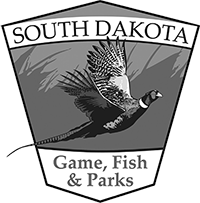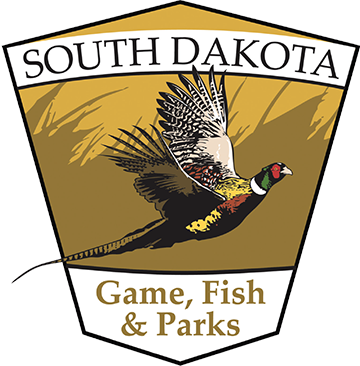Progress Update as of December 6, 2017
The Open Waters Compromise (HB 1001) passed on June 12 and reopened access to 27 GFP managed nonmeandered lake boat launches where access had previously been restricted in response to the Supreme Court ruling in Duerre v Hepler. GFP had removed all barriers to those closed access sites by June 16.
After passing of HB 1001, the GFP website was updated with information to aid the public in understanding the bill and how it affected access to waters in the state.
- The department added a summary of HB 1001 to the GFP website.
- A “Frequently Asked Questions” section was added to the website to provide answers regarding the bill, meandered vs. nonmeandered lakes, process for closing nonmeandered waters, posting requirements and more information continues to be added to the site as process details become available.
- The department also added a list of meandered lakes to the website. Meandered lakes are not affected by HB 1001 and are open to recreational use by the public.
- An online map shows the water bodies that have been legally closed.
- Sites listed have been reviewed to ensure ownership.
- Sites have been investigated to ensure they are nonmeandered and not Section 8 lakes.
- Section 8 lake landowners are notified of the GFP Commission petition process if they wish to close waters over their flooded property.
- Eight sites have been legally posted as closed. Staff met with the landowners to see if there was any desire to enter into an access agreement and to confirm ownership. There has been open dialogue, but no agreements have been completed at this time.
- Three water bodies in Clark County have been marked as closed.
- One water body in Marshall County has been marked as closed.
- Two water bodies in Day County have been marked as closed.
- Two water bodies in Kingsbury County have been marked as closed.
The GFP Commission finalized administrative rules for marking closed waters at their November meeting.
- GFP will provide closure signs to landowners who wish to close nonmeandered waters. This will create consistent and easily recognizable markings. Similarly, the department provides 660’ Safety Zone signs to landowners who wish to mark hunting safety zones in rights-of-ways around their building sites.
- The marking requirements include the following:
- Nonmeandered water closures shall be marked with buoys and/or department-supplied signs.
- Signs and buoys must be placed no further apart than 660 feet.
- Signs and buoys shall be installed so they are conspicuous.
- Buoys shall be of polyform design.
- Buoys shall be red with contrasting 3 inch minimum letters stating: “Closed.”
- Buoy size shall be a diameter of not less than 14.5 inches and a length of not less than 19.5 inches.
- Signs and buoys are to be installed and maintained by the owner or their designee of the private property.
- Property corner boundaries located in the water must be marked by signs or buoys.
- The department has signs available.
- The department will provide a list of vendors who could supply buoys meeting the standards required.
- Marking standards can be found here.
The GFP Commission finalized a rule in September that provides a mechanism for a landowner with property on a Section 8 lake to petition the Commission requesting a recreational use restriction on a portion of the water over their flooded land.
- As defined in statute, the GFP Commission must consider privacy, safety, substantial financial interests of the landowner, along with water quality, water quantity and the public’s interest in recreational use of the water in making their decision on whether to grant in full, in part or deny the petition.
- Landowners can complete and submit the form online or print and mail the form to GFP.
- The Commission has received two petitions to close parts of two different Section 8 lakes. The first petition was a request to provide for closing part of Cattail-Kettle Lake in Marshall County. The Commission held a contested case hearing on the Cattail-Kettle petition on November 2 and subsequently denied the request after considering all the criteria they are tasked with evaluating. The Commission received a second petition on November 7th – this one for a partial closure on Goose Lake in Codington County. A hearing for this petition is tentatively scheduled for March 1 in Pierre.
- A few other landowners have contacted the department to ask about the petitioning process to request closing some water over their land on a Section 8 lake. Most of those landowners have indicated they may request to close an area as a privacy buffer, but no other petitions have been received to date.
Access Agreements
- The department has met with several landowners regarding the possibility of providing some access to lakes which have been closed under injunctions (Long, Parks, Schiley, Duerre). The landowners would like to provide some access for recreation, but want to make sure the fisheries are sustainable. They are very interested in conserving the resource and want to be confident it isn’t over-exploited. There has been discussion of how best to provide access, but yet maintain a viable and lasting fishery. Some of the initial thoughts shared included:
- Non-motorized boats only
- Limited time frame when water body will be open
- Limit access to certain locations on the water bodies
- Preference would be to have all the landowners on the water bodies in agreement in order to eliminate the need for buoys separating open and closed areas if possible.
- No access agreements have been reached to date, but there is ongoing discussion to see if common ground can be reached to provide some public access.
The department has developed a database to aid staff in tracking information on questions, closures and interest in agreements. This has proven valuable in following up on requests from the public. This information will also be used in reporting back to the legislature on progress and activity relating to the bill.
· The department continues to work on Recreation and Respect communication efforts to encourage positive interactions among anglers, hunters and landowners.
o Posters have been printed and distributed to display in GFP regional offices as well as at over 400 licensing agents across the state.
o 2017 Hunting Handbook provides information on The Open Waters Compromise and an ad regarding Recreation and Respect.
o 2017 Landowner Deer Application provides a full page ad regarding Recreation and Respect.
o The State Fair provided the opportunity for staff to answer nonmeandered waters questions on site and deliver the Recreation and Respect message while providing a one page handout of the FAQs.
o South Dakota Conservation Digest July/Aug issue:
§ Nonmeandered Waters FAQ
§ Article on Accessing Private Lands
o Facebook Live Question and Answer session took place on August 21 featuring GFP Secretary Kelly Hepler and Ag Secretary Mike Jaspers – an outline of logistics, location and testing is in development along with promotion of the event in advance. Questions will be taken from customers in advance of the event.
o Facebook memes began on September 1 – also will consider paid ads if necessary.
o Green Sheets advertising/article - September.
o Dakota Country magazine ad – Ad in the September issue.
o Landowners Matter Special Edition – October –distributed to over 13,000 landowners across the state.
o SDPB Focus Program – October 26 –featuring GFP Secretary Kelly Hepler, Ag Secretary Mike Jaspers, Rep. Herman Otten and Attorney Matt McCaulley.
There was considerable interest leading up to the special session and the department has fielded numerous questions after HB 1001 passed. Most questions have revolved around the law and what the public can and cannot do. The information on the department website has been valuable in answering most questions that have arisen. The agency will continue to work closely with landowners, sportsmen, the GFP Commission and the Legislature to make the Open Waters Compromise work for everyone.

